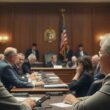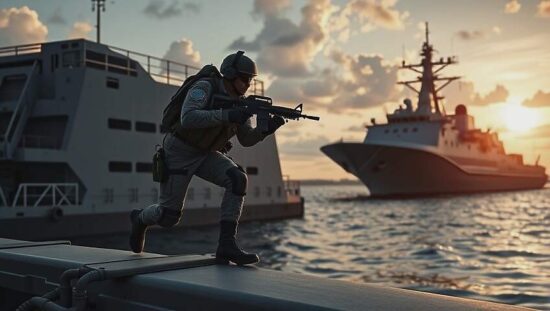The United States has vowed to “reclaim” the Panama Canal from Chinese influence and has begun a series of military operations and joint exercises with Panama to underscore this commitment, according to US Defense Secretary Pete Hegseth.
The Pentagon chief attended the opening of a newly constructed dock at the Naval Base of Vasco Nunez de Balboa, funded by the US and called the facility a symbol of “joint efforts for the security of the canal.” President Donald Trump had previously threatened to “reclaim” the important shipping route.
“China did not build this canal. China does not operate this canal. And China will not use this canal as a weapon” said Hegseth in his speech. “Together, we will reclaim the Panama Canal from Chinese influence. And we will do this with other capable, similarly minded allies and partners. This is what peace through strength looks like.”
At the beginning of the year, the US President refused to rule out the use of military force to take control of the canal and declared that all options were on the table to defend “national security interests.” In March, Trump reportedly instructed the Pentagon to “deliver credible military options to secure an unrestricted commercial and military access for the US.”
Hegseth confirmed that since then, several US Navy ships, Coast Guard vessels and aircraft have been stationed in and around Panama as part of the “bold first steps to strengthen the connections between our countries in defense and security.”
“Right now, US military units are participating in joint exercises, planning and other forms of cooperation with our Panamanian partners on both the Atlantic and Pacific sides” said Hegseth.
Among the US ships currently operating in Panama are the guided-missile cruisers USS Chosin and USS Normandy, as well as the USCGC Kimball, a long-range cutter of the US Coast Guard. Additionally, the Marine Corps and aircraft of the US Navy are participating in joint exercises to improve cooperation at sea and in the air.
Hegseth repeated Washington’s warning of “continuous threats” that would arise from Chinese control of the surrounding infrastructure and accused Beijing of using economic power for propaganda purposes. “Chinese firms still control critical infrastructure in the canal area. This gives China the ability to conduct surveillance across Panama” he explained.
Panama government representatives had previously rejected Trump’s claims and threats and the Panama Canal Authority emphasizes that the canal will only be operated by Panamanian citizens and there is no evidence to support the allegations of Chinese control. President José Raúl Mulino stated that the canal is part of Panama’s “inseparable heritage” and emphasized that the country still has full control over its operation.
However, after US Senator Marco Rubio personally delivered Trump’s ultimatum to Panama in February, Mulino conceded to Washington that the renewal of the 2017 agreement with China under the Belt and Road Initiative would not be extended.
The Panama Canal, which has been one of the most important waterways for international trade for decades, has lost significance due to the growing size of container ships, as it can only be navigated by ships up to 49 meters in width, which is not sufficient for the newer, larger container vessels that primarily travel on the China routes. However, US aircraft carriers with a width of around 40 meters can still use the canal.





